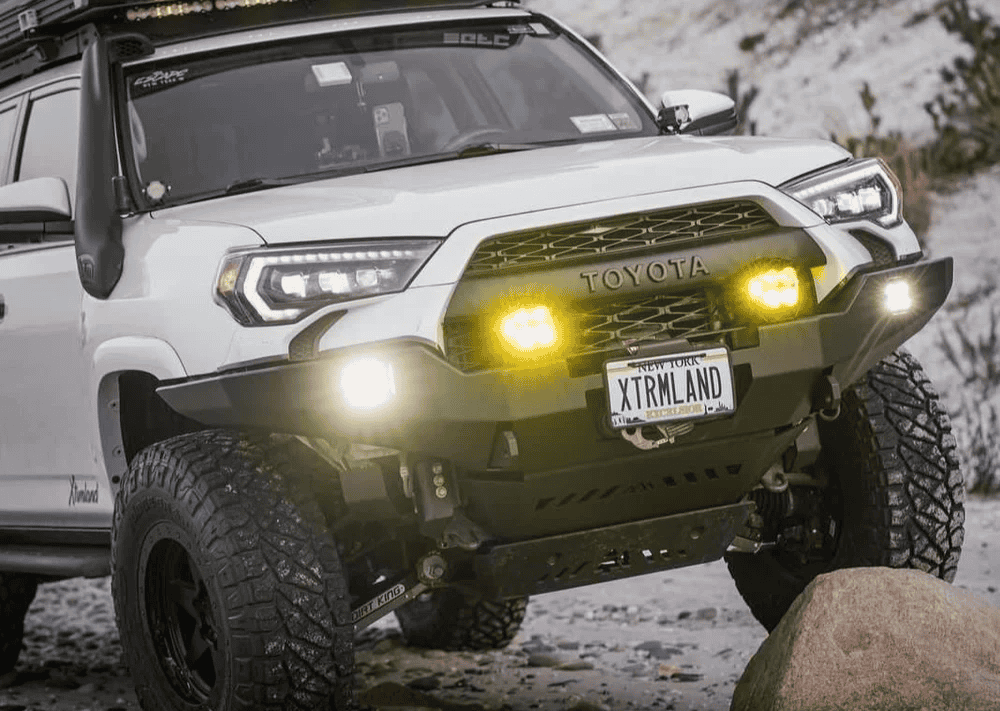Overland Vehicles

Utility and service overland rigs exist to carry skilled people, critical tools, and dependable power into places where paved roads end. These builds show up on fire roads, pipeline corridors, ranch tracks, and forest access routes. The goal is simple: reach the job site, work efficiently, and return safely with everything still in its place.
Capabilities start with the right platform. Half ton and three quarter ton pickups, full size vans, and cab chassis frames all appear in this category. The choice depends on GVWR needs, interior workspace requirements, and service body compatibility. Four wheel drive, locking differentials, appropriate gearing, and all terrain tires keep traction reliable without sacrificing drivability on highway miles.
Ergonomics matter as much as horsepower. Technicians should access heavy tools from waist height, not from awkward reaches. Slide out drawers, top hinged compartments, and drop down ladders reduce strain and speed up tasks. Weather sealing, dust management, and drainage in storage zones protect sensitive instruments and keep consumables clean.
Terrain dictates suspension strategy. Mild washboard favors frequency tuned shocks and progressive springs, while rutted two tracks may call for higher ride height, reinforced control arms, and larger sidewalls to prevent pinch flats. Payload planning is non negotiable. Account for full fluids, tools, spares, crew, and any trailer tongue weight. Reliability follows from preventative maintenance and redundancy: dual batteries, protected wiring, and shielded underbody components.
Power systems keep work flowing. Lithium batteries paired with a high output alternator and clean sine inverter run laptops, test equipment, and small compressors. Solar extends runtime when idling is restricted, and a DC to DC charger ensures recovery on short trips. Clear labeling and accessible breakers simplify troubleshooting when minutes count.
Storage and service bodies define efficiency. Aluminum or composite canopies reduce weight and resist corrosion. Interior modules with latching drawers prevent tool migration on washboard. Tall items ride in tie down bays with load rated tracks. A well planned layout places daily use items at the door and specialty gear deeper in the cabinet system.
Communications protect crews and schedules. A cellular booster improves uploads from fringe areas, while two way radios maintain convoy spacing where coverage drops. Satellite connectivity offers a backstop for messaging, navigation updates, and weather alerts. Mount antennas clear of roof racks and away from high draw electronics to reduce interference.
Recovery gear should match vehicle mass and terrain. Rated soft shackles, a kinetic rope, traction boards, and a high quality jack cover most scenarios. Skid plates, rock rails, and steel bumpers guard critical systems from trail strikes. Scene lighting uses a blend of area floods and low glare work lights mounted high and low to eliminate shadows while preserving night vision.
Crews perform better in controlled environments. Efficient ventilation, diesel or fuel fired heaters, and insulated panels stabilize interior temps. Washdown surfaces, wet dry storage zones, and handwash stations maintain hygiene and prevent cross contamination between clean gear and field equipment.
Service rigs intersect with regulation. Verify weight ratings, secure all cargo, and maintain reflective markings where required. Fire extinguishers, first aid kits, and eyewash bottles should be visible and inspected regularly. Digital checklists and maintenance logs create accountability and smooth fleet operations.
Budget by total cost of ownership, not parts alone. Lighter materials reduce wear, smart power lowers idle time, and modular interiors adapt as missions change. Build plans should start with a clear job map, a tested load list, and a route profile to prevent scope creep and overweight surprises.
When the platform and mission are defined, a professional upfit brings it together. Drivetrain choices, suspension tuning, storage, and power integration must serve the work, not just the spec sheet. If you are reviewing options, explore overland rigs to understand how platforms and layouts translate into real field performance.
Specialist upfitters translate your tool list into secure compartments, charging docks, and safe access. See how a focused team approaches layout and integration on custom overland upfit projects, from power planning to recovery packages that fit the mission.
Trust in the shop behind the welds and wiring. Learn more about build standards, testing, and client experience at why choose OZK Customs before you spec your rig.
OZK Customs builds utility focused overland rigs for crews who cannot miss a day in the field. From organized service bodies and clean power to tuned suspension and protected underbodies, our team designs around your job, your terrain, and your deadlines. Based in Fayetteville Arkansas, we are centrally located for nationwide projects and efficient handoffs.
Tell us what you carry, where you go, and how you work. We will map payload, lay out storage, spec power, and deliver a rig that starts every time and stays productive all day. Your next field proven build begins with a conversation.
Ready to turn a capable platform into a dependable field tool? Tell us how you work, and OZK Customs will design a service focused overland rig that stays organized, powers your gear, and performs in rough country. Start your build plan today.
ADDRESS:
6159 E Huntsville Rd, Fayetteville, AR 72701
PHONE:
(479) 326-9200
EMAIL:
info@ozkvans.com